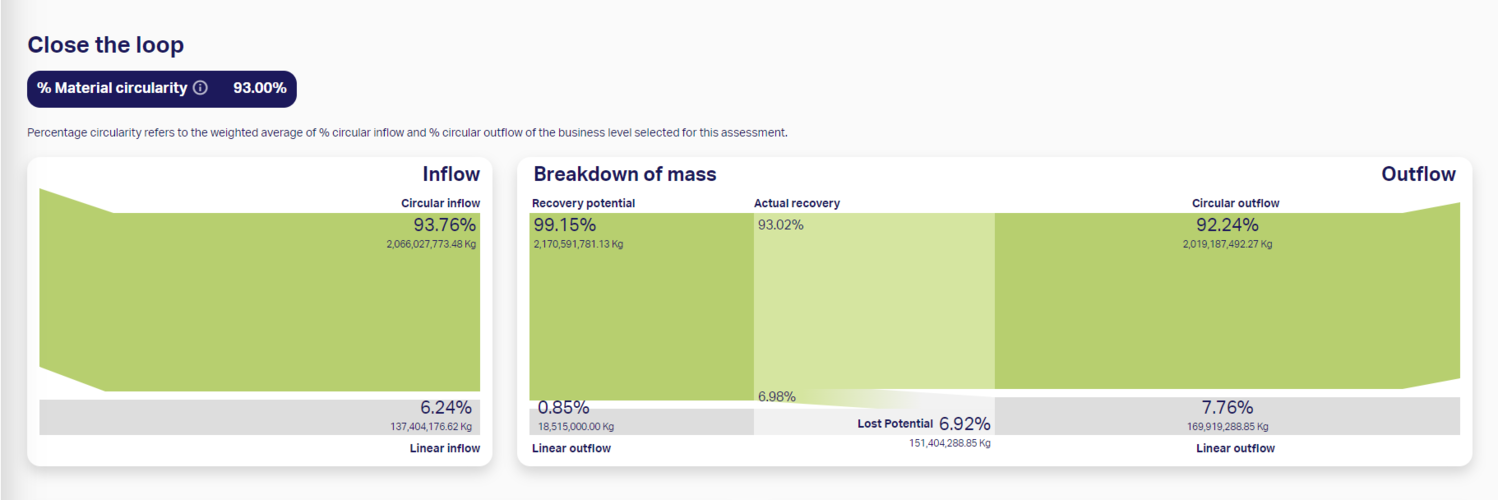"CELSA GROUP TM has the ambition to give infinite lives to finite natural resources. To achieve this, it set the goal to become a zero-waste company. The Circular Transition indicators (CTI) allow us to monitor how far we are from our ZERO WASTE goal and which areas we need to focus on to improve. This makes CTI essential to translate our vision into a strategic roadmap" - Paola Baldivieso, Sustainability and Strategy Manager.
Company introduction
|
Trash to treasure
As a highly integrated company with its upstream value chain, CELSA Group collects ferrous waste from end-of-life vehicles, demolition projects, and steel scrap from factories. It operates seven steel mills, 12 rolling mills, 45 recycling plants, transformation plants, as well as distribution and service companies.
As one of the most commonly used materials globally, steel is a driver of the world economy. It is found in products from container ships and buildings to scalpels and electronic products. However, steel is also linked to an energy-intensive, heavy-polluting production process, accounting for 7% of all global CO2 emissions. But it doesn’t have to be this way. Carlos Abajo Fuentes, CELSA’s Head of Environment, says, “Steel is infinitely recyclable without losing its properties. Its magnetic properties also make it easy to separate from other waste streams. By using electric-arc furnaces, our production processes require 75% less energy and emit nine times less CO2 than the most common method for manufacturing steel, using a standard blast furnace.”
CELSA Group has long identified the two main systemic risks that their industry faces – the depletion of natural resources and climate change. To help to mitigate these impacts, CELSA aims to become more circular and to decarbonize their operations. Paola Baldivieso, CELSA’s Sustainability Manager, says, “We have set a clear goal to have net-zero emissions and be a zero-waste company by 2050. To become a zero-waste company, we are committed to recovering and using waste generated during the steel production process. We use CTI to track our progress toward our circularity goal. CTI provides a quantitative assessment of our material inflows and outflows to arrive at a concrete circularity score for our production processes, which can then be compared with other companies in our industry.”
Defining and measuring circularity
With sustainability deeply ingrained in the company culture, CELSA has already taken many actions to become more sustainable and circular. However, they lacked the means to quantify these actions and turned to CTI for insight. CTI helped them define what circularity means for the company and identify relevant metrics.
Need for clear definitions on circular economy
CTI aligned the company on what it means to be a fully circular company. Narcis Giralt, CELSA Group’s Head of New Products and Solutions explains, “During our CTI journey, we quickly realized that each person in the organization had a different understanding of what circularity means for the company. For instance, the Commercial Department thought that side-products from production are circular as long as they are recyclable and bought by a recycler. In CTI calculations, however, you need to consider the material amount that is actually recovered and reused in the next product application. CTI was instrumental in clarifying key definitions so that everybody in the company could speak the same language and that we could adopt a unified way to measure circularity.”
Identifying data gaps & setting homogenous criteria for all business units
In the data collection phase of the CTI assessment, the company faced the big challenge of collecting reliable data from its suppliers and customers. ”We realized how little we knew about our suppliers’ production processes and the disposal of our products. Our steel products are 100% recyclable, but there is no clarity on how much of them are recycled in practice, and official statistics are lacking. CTI helped us to put these important questions to the forefront and decide consistent criteria to be followed by all business units,” says Paola Baldivieso.
Steps to analyze 99% of material flows
CTI provided crucial guidance to set the scope of CELSA’s circularity assessment, helping to select the right indicators and the type of data needed. The CTI Tool was used to collect the data and make the calculations.
Setting the scope of the assessment
The company started by deciding what they wanted to measure. “In alignment with our ambition to become a zero-waste company, we decided to include all CELSA Barcelona products. That meant we would measure all material inflows and outflows relating to this plant, which consist of raw materials, gases and liquids (non-water)” says Paola Baldivieso. CELSA ended up including 99% of all incoming and outgoing materials in their CTI assessment. Figure 1 gives an overview of the considered materials flows.
Figure 1 - Considered material flows in CTI assessment CELSA Barcelona
Data collection
All data were analyzed within the enterprise resource planning (ERP) system, transforming all consumption units into kilograms and disaggregating alloyed materials into each physical element in order to reach more accurate conclusions. Narcis Giralt explains, "We segregated the analysis of all ferroalloys between ferrous and alloy content. This process was more time intensive than analysis at material-level, but analyzing physical elements provided better, more actionable insights at the end”. Water circularity was also measured, which presented a challenge because the company does not measure water use but rather the amount collected from their pit and the amount discharged into the sewage system.
Pushing material circularity from 93% to 95%
The CTI analysis showed a positive result: the material circularity is set at 93%. This is a benchmark on which the CELSA wants to improve, and several circular opportunities were identified that could push the 93% material circularity to 95%.
Main results
CELSA Barcelona has a material circularity score of 93% (Figure 2: Material circularity of CELSA Barcelona). Material circularity measures the percentage of mass inflows and outflows that can be considered circular. Mass inflows are all materials and products necessary to produce products. 93.8% of the total purchased material weight is from scrap they reuse, which is considered circular inflow. The outflow side measures the percentage of materials recovered after use. To recover materials after use, products must be designed for recycling from the beginning, and recycling infrastructure needs to be in place. 99% of CELSA Barcelona's products are recyclable. Of that 99%, 93% gets collected and reused in new products.
Figure 2 - Material circularity of Celsa Barcelona (Results derived using the CTI Tool)
Circular opportunities
“CTI provided us with a clear view of the most important areas for us to focus on to improve our circularity” explains Paola Baldivieso and the company identified the following interventions to improve circularity:
1) substitute lime with white slag in our inflows,
2) reuse refractories, and
3) improve the valorization of scrap impurities.
Implementing these changes will improve material circularity by 2%, moving the indicator from 93% to 95%. The last 5% can only be achieved through innovation of the company’s products and production processes in collaboration with clients and suppliers.
Value of CTI in becoming circular
Becoming a zero-waste, circular company requires a standardized definition and circularity measurement at each site. CTI offers a simple, unified approach to circularity. The company plans to extend CTI to other production facilities to standardize circularity measurement at each site, allowing for comparison among them and progress tracking.
Adopting CTI definitions
Reflecting on the learnings from the CTI assessment, Narcis Giralt says, “We learned about new circularity concepts and indicators not measured so far, such as water circularity, % outflow circularity and “value the loop” indicators. The calculation of % circular outflow was comprised of measuring the recyclability products, which is 100% for steel, and the actual quantity of recycled steel. This was new to us and required data about what our customers are doing with their products”.
How CTI defines circularity is aligned with existing and developing circularity standards, such as the ISO 59020 on measuring circularity. “A common definition and approach to circularity measurement helped us to improve internal and external communication. Internally, it helped us to educate our team, empowering them to participate in the transition toward a circular business model. Externally, it helped us to build close relationships with suppliers and clients and to develop an understanding of shared circularity priorities,” Paola Baldivieso explains.
Next steps
CTI helped to push the circularity strategy of CELSA Barcelona to the next level. “CTI is a quantitative methodology that helped us to quantify the impact of circularity improvement actions currently in progress. This helped us develop a set of robust circularity KPIs that could translate our circularity vision into a strategic roadmap, tracking our progress toward 100% circularity” says Narcis Giralt. As a next step, the company plans to extend the use of CTI to other production facilities to enable comparison and progress monitoring.






